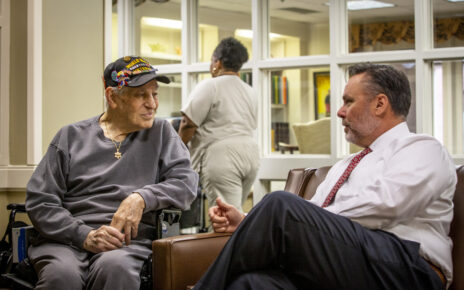by Lola Rain, Contributor
Recently my San Francisco State intern asked to learn about a topic very dear to my heart: How can senior living leaders help reduce employee burnout?
- Employee Benefits
- Company Culture
- Work / Life Balance
- Technology
EMPLOYEE BENEFITS
Many companies offer an array of benefits that may include access to counseling services and therapists. Employee Assistance Programs (EAP) are fantastic in theory, but often the only time you hear about these benefits is on your first day when the HR Director hands you a brochure.
For these benefits to be utilized, people must be reminded of them — and a poster in the breakroom is not enough. Some of the reasons I’ve heard staff say why they don’t use EAP include: “I didn’t know about it,” and, “I don’t want my company to know I’m seeking counseling.”
These two objections can easily be addressed by consistently talking about the EAP services available and how they are anonymous because they are operated by a third party. The reason you need to be consistent is people will only pay attention when it becomes relevant to their situation and they need it.
COMPANY CULTURE
Every hiring manager knows there are people who will go excel at their job duties and there are people who will do just enough to get by. Most managers probably prefer the achievers because these types of employees tend to have less turnover. But what if you had the tools necessary to help all employees succeed? Good culture equals good performing employees. Excellent culture equals excellent performance throughout the organization.
However, beware of staff who are too dedicated. They need a vacation. Dedicated frontline staff will use excuses on why they cannot take a day or two off work. “My residents need me,” is a common excuse. We love the staff who feel this way, but it is false. The residents need you to take time for yourself. Remind your staff residents want to hear about their day off. They want to hear about their vacation.
If we can shift the conversation from ‘short staffed’ to ‘replenished staff,’ employees will feel more comfortable taking time off to get refreshed. We know that staffing stressors are overwhelming and cannot be ignored, but it’s up to leadership to set the tone. A challenge is an opportunity. A half empty glass is really half full. The future is brighter than the past.
WORK/LIFE BALANCE
Do you teach your staff about work/life balance? Do you role model it? The most important thing to remember about balance is that you are pausing your work brain while doing something that is important for yourself. Encourage employees to spend time with their families. Ask about their hobbies and interests.
Another factor important for balance is having an outlet to reduce stress when the thoughts of work creep in. How do you slow the creep of these thoughts that try to occupy your mind? Share your techniques with your staff. Open up and talk about it.
THE GREAT TECHNOLOGY ESCAPE
For over 10 years now people have been heads down looking at their smartphones. It’s not just a millennial thing anymore. Everyone does it. The apps that attract us have an upside. They are distractors. They can give our minds a break and reset our thoughts. Seeing a newborn baby on Facebook can make you smile and reset your mood. Watching a short video of animals or people dancing can produce endorphins and give you a burst of energy. Many new companies have emerged because of this need to balance.
Calm and Headspace are two apps focused on helping people rest and reset. In fact, healthcare companies like Kaiser find value in these services. Kaiser offers a free Calm subscription to its members through kp.org. Calm is tackling mental fitness and says its mission is to “Build a happier, healthier, and more resilient workforce.” Headspace promotes it helps users manage feelings and thoughts, and it takes only a few minutes a day to reduce anxiety and increase sleep quality.
COVID-19 has been a catalyst for technology advancements. Our eyes are now open to how easy it is to access doctors and therapists online. With these tools, and our leadership skills, we are more armed than ever before to help our staff overcome burnout.


 There are a few ways to evaluate this question:
There are a few ways to evaluate this question:

